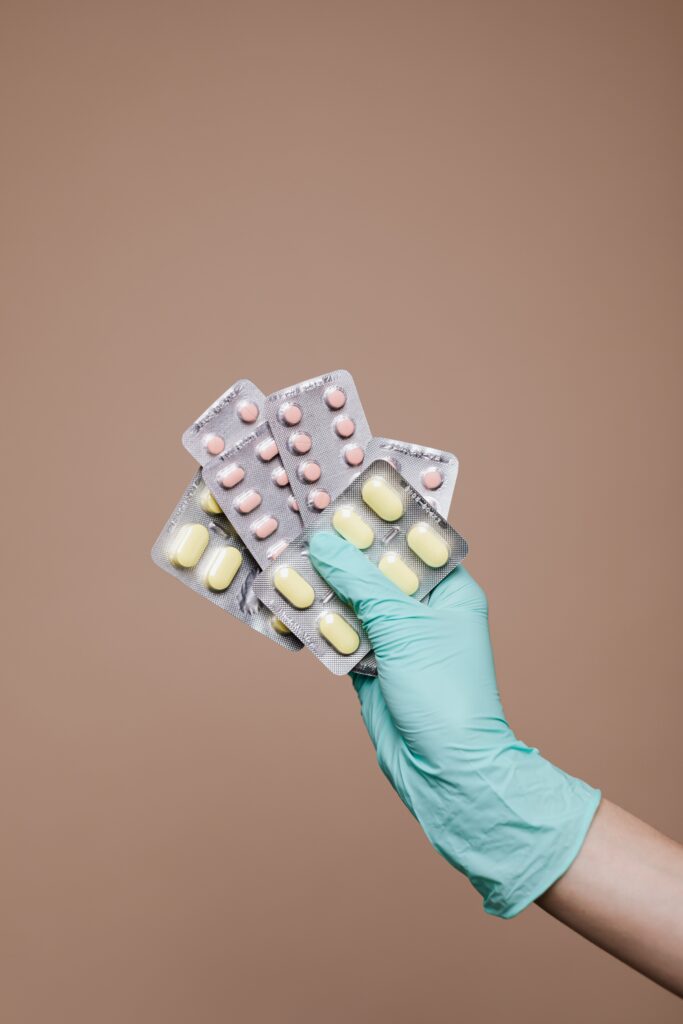Pharmacy preparation involves preparing medications according to medical prescriptions and providing them to patients. This can include mixing different ingredients to create a customized medication, preparing medications in unit doses or in bulk, and verifying the accuracy and quality of medications before distributing them to patients.
1. Verifying the prescription
First, the pharmacist must verify the medical prescription and ensure it is correct and complete. They must also ensure that the prescribed medication is appropriate for the patient taking into account their medical history and any ongoing treatment. If the pharmacist has doubts or concerns, they must inform the doctor and request additional instructions.
2. Intake
The most important phase in the preparation of pharmaceuticals in pharmacies is intake. To ensure that medications are prepared appropriately and securely, pharmacy staff members record prescription information and gather patient information during intake. As part of this procedure, the patient’s name, date of birth, and contact information are gathered, and the prescription’s specifics—including the medication’s name, dose, and usage instructions—are verified. To find out whether the patient’s insurance will cover the prescription and how much the patient will have to pay out of pocket for the drug, the pharmacy staff may also contact the patient’s insurance company.
For the appropriate individual to receive medication, it’s important to verify the patient’s identity as part of this process. Accurate intake ensures that patients receive the proper drug in the appropriate dosage, which is essential for their health and safety. Accurate intake also helps to prevent medication errors.
3. Review
In order to ensure that patients receive safe and effective pharmaceuticals, the review procedure is an important stage in the preparation of medications in pharmacies. A pharmacist carefully reviews the prescription during the review process to look for any possible drug interactions or allergies. If required, they may also speak with the doctor who is writing the prescription. The pharmacist’s responsibility is to make sure the dosage and suitability of the medication for the patient are both accurate. They utilize their knowledge to determine whether the drug is risk-free for the patient and to spot any problems that might arise and risk the patient’s health.
Interactions between medicines can be complicated and potentially dangerous, making this evaluation process all the more important to patients who are taking many drugs. In the end, the review procedure helps to avoid pharmaceutical mistakes and guarantees that patients get safe, effective prescriptions.
4. Order Entry
Since it involves using prescription information in the pharmacy’s computer system, order entry is an essential process in the preparation of medications in drugstores. The name, dosage, and usage instructions of the prescribed medication are entered into the computer system by pharmacy employees during this procedure. Also, they can enter the patient’s name, contact information, and insurance information. This data is used to create a medicine label that contains crucial patient instructions, such as how to take the medication and any possible side effects.
For pharmaceuticals to be made precisely and quickly, the order entry process is important. Pharmacy workers may quickly and easily retrieve the information they need to make the medication and guarantee that the right drug is given to the patient by entering prescription details into the computer system.
5. Preparing the medications
Once the pharmacist has verified the prescription, they must prepare the medication according to the doctor’s instructions. Especially about the medication, which the company probably asked a service provider to produce a pharmaceutical packaging. This can include mixing different ingredients to create a customized medication, preparing medications in unit doses or in bulk, and verifying the accuracy and quality of medications before distributing them to patients.
To prepare the medications, the pharmacist must use specialized equipment such as precise balances and mortars and pestles for mixing ingredients. They must also follow strict safety protocols to avoid any contamination or errors in the preparation of medications.
6. Verifying the medications
Once the medications are prepared, the pharmacist must verify them to ensure they are accurate and of quality. This can include checking the expiration date, labeling and packaging, and any other necessary information. If the pharmacist finds a problem with the medication, they must report it to the doctor and not distribute it to the patient.
7. Labeling
As it gives patients vital information about their medication, labeling is a crucial step in the preparation of medications for sale in pharmacies. The name of the patient, the name of the medication, the dosage, and usage instructions are all included on the label that the pharmacy staff creates for the medication. Information about possible side effects or drug interactions may also be included on the label. To guarantee that patients understand how to take their prescription appropriately and safely, clear and accurate labeling is important. Labels, which clearly list the drug that was prescribed and the usage instructions, also aid in preventing prescription errors.
To help patients better understand their prescriptions and how to take them properly, pharmacists may also produce patient education materials, such as pamphlets or handouts, in addition to producing labels for specific medications.
8. Dispensing
In a pharmacy, dispensing refers to the process of preparing and giving patients their prescriptions. The pharmacy staff reviews the prescription information before administering the medication and prepares it in accordance with the label’s directions. In order to guarantee that the treatment is made precisely and regularly, they could count pills, measure liquids, or employ other methods. The pharmacy staff packages the drug with the proper label and usage instructions after it has been manufactured. Also, they might offer patients more advice or information regarding the medicine.
9. Distributing to patients
Finally, once the medications are verified and approved, the pharmacist can distribute them to patients. This can be done by directly handing them to the patient or by sending them to their home or healthcare facility. The pharmacist must also inform the patient of the usage instructions and any precautions to take when using the medication.
An essential component of the pharmaceutical preparation process is dispensing, which guarantees that patients receive the right medication in the right dosage. Pharmacy workers can reduce medication errors and guarantee that patients receive safe and effective prescriptions by carefully preparing and packaging the medication. In general, the dispensing procedure is vital in ensuring that patients get the prescription drugs they require to treat their medical conditions.
10. Counseling
As it helps to guarantee that patients understand how to use their prescriptions safely and efficiently, counseling is an essential step in the preparation of medications for sale in pharmacies. The pharmacy staff goes through the dosage instructions with the patient during the counseling process, explaining how to take the drug, any possible adverse effects, and any other pertinent information. Aside from providing extra information or educational materials, they may also respond to any queries the patient has regarding their medication.
Patients who are taking new medications or who have complicated medical conditions should receive counseling in particular since these patients may have queries or worries regarding their medication. The pharmacy staff can ensure that patients are able to utilize their medications safely and successfully by giving them clear and accurate information. In general, the counseling procedure is essential for preserving patient safety and making sure that patients get the care they require to manage their medical conditions.
11. Documentation
Toto maintain accurate records for each patient and prescription, documentation is an essential process in the preparation of pharmaceuticals in pharmacies. The pharmacy staff documents the patient’s name, address, and insurance information as well as the specifics of the drug that was prescribed. They also record these facts during the documentation process. A record of the patient’s medication history is created using this data, and it can be used to monitor the patient’s progress and make sure they are receiving the right care.
Documentation is essential for billing and reimbursement since it makes it apparent which drugs were prescribed and how much each one cost. Pharmacy employees may contribute to ensuring that patients receive the right care and that the pharmacy runs smoothly by maintaining accurate and thorough records.
12. Educating patients
In addition to preparing and verifying medications, pharmacists also have a role in educating patients about their medications. They may provide information on proper usage, potential side effects, and any interactions with other medications or substances. They may also answer questions and address any concerns that patients may have about their medications.
This education is an important part of ensuring that patients are able to effectively use their medications and achieve the desired therapeutic outcomes. Pharmacists may also work with patients to develop a medication regimen that is appropriate for their needs and helps them to manage their health conditions effectively.
Why are these important?
1. Accuracy – To guarantee that patients receive the proper medication in the appropriate dosage, medications must be properly prepared. Errors in medicine administration, which can have catastrophic effects on patients, can be avoided with careful planning.
2. Safety – Multiple checks and balances are used during the preparation of pharmaceuticals at drug stores to assist assure patient safety. Before giving patients their prescriptions, pharmacists check them for possible drug interactions or allergies and make sure the pills have been properly prepared.
3. Convenience – Many patients rely on pharmacies to swiftly and effectively manufacture and administer their prescriptions. Patients can save time and manage their health more easily if they can fill their prescriptions at a nearby pharmacy.
4. Accessibility – Patients can more easily acquire the medications they need because drug stores are frequently found in the areas where they live and work.
5. Expertise – To prepare and deliver medications safely and accurately, pharmacists and pharmacy technicians get specialized training. Also, they can give patients guidance and information on how to take their drugs, as well as information on possible adverse effects and drug interactions.
Conclusion
Preparing personalized medications based on a patient’s unique needs and requirements is known as “prepping” in pharmacies. The medication is made precisely and safely thanks to the pharmacist’s use of specialized tools and strict rules. Prepping at pharmacies gives patients access to customized pharmaceuticals that might not be commercially available, enhancing patient outcomes and quality of life.



